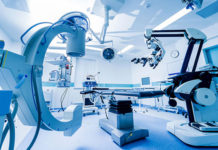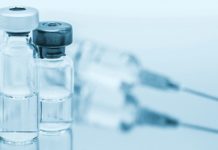LipoScience, Inc., an in vitro diagnostic company committed to advancing patient care in cardiovascular, metabolic and other diseases, today presented key findings related to lipoprotein particles (LDL-P) and cardiovascular disease at the Annual Meeting of the American Heart Association (AHA) in Los Angeles.
Low density lipoprotein cholesterol levels (LDL-C) do not always provide an accurate assessment of overall heart health. LDL-P are also a key factor in cardiovascular disease (CVD) management. Elevated LDL-P cause plaque buildup in the arteries, which in turn leads to heart attacks and other CVD events. LDL-P is a key component of LipoScience’s NMR LipoProfile® test, which provides physicians and their patients with actionable information to personalize management of heart disease risk.
At AHA, Dr. Hector Malave of Cardiology of Atlanta presented results from a study that illustrates the effect that lipid-lowering medications have on LDL-P in patients with angiographic coronary artery disease. The study evaluated 83 patients with elevated LDL-P levels and concluded that the majority of these patients treated with lipid-lowering medication for angiographic coronary artery disease had achieved target LDL-C levels, but many had failed to achieve LDL-P goals. The results suggest that these patients may still harbor risk for cardiovascular events based on their elevated LDL-P concentrations.
Dr. Donald Lynch of Vanderbilt Heart also presented data focused on the effects of LDL apheresis on lipoprotein particle concentrations as determined by nuclear magnetic resonance (NMR). The study found that LDL apheresis reduced LDL-P by 67 percent, while high-density lipoprotein particle number (HDL-P) increased slightly in the study population, although the increase was not statistically significant. The primary effect of apheresis was significant reduction of apoB-containing lipoprotein particles (LDL and VLDL), with little effect on HDL-P.
“The data presented during AHA further validate the critical role of lipoprotein particles in managing cardiovascular disease risk,” said Robert Honigberg, M.D., Chief Medical Officer and Vice President, Medical Affairs of LipoScience. “Physicians should be aware of the need to test and explore ways to lower LDL-P to help reduce residual cardiovascular risk for patients and recommend appropriate treatment plans. Directly measuring LDL-P with the NMR LipoProfile test enables physicians to gain a more complete picture of heart health.”
LipoScience AHA Poster Presentation Details: Tuesday, November 6, 2012
LDL Particle Number (LDL-P) Distribution in Patients with Angiographic Coronary Artery Disease on Lipid-Lowering MedicationLead presenter: Hector A. Malave, M.D.Abstract/Poster # 2023Time: 9:30 a.m.
Impact of LDL Apheresis on Lipoprotein Particle ConcentrationsLead presenter: Donald R. Lynch Jr., M.D.Abstract/Poster # 2019Time: 3:00 p.m.
About LipoScience, Inc.
LipoScience, Inc. is pioneering a new field of personalized diagnostics based on nuclear magnetic resonance (NMR) technology. Its first proprietary diagnostic test, the NMR LipoProfile® test, measures the number of low density lipoprotein particles (LDL-P) in a blood sample and provides physicians and their patients with actionable information to personalize management of risk for heart disease. To date, over 8 million NMR LipoProfile tests have been ordered. LipoScience’s automated clinical analyzer, Vantera has recently been cleared by the FDA and will be placed with national and regional clinical laboratories. LipoScience is driving toward a clinical standard of care by decentralizing its technology and expanding its menu of personalized diagnostic tests to address a broad range of metabolic and other diseases.


























